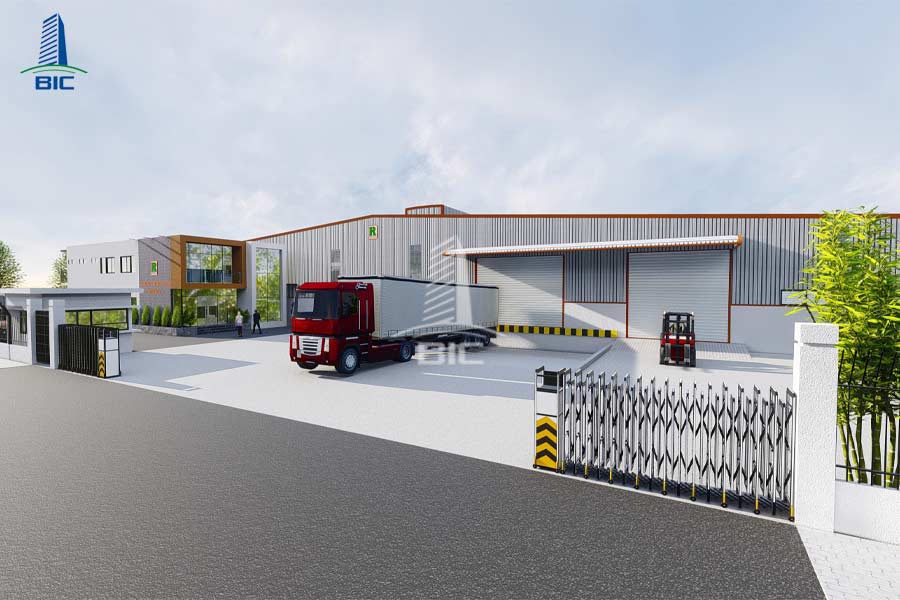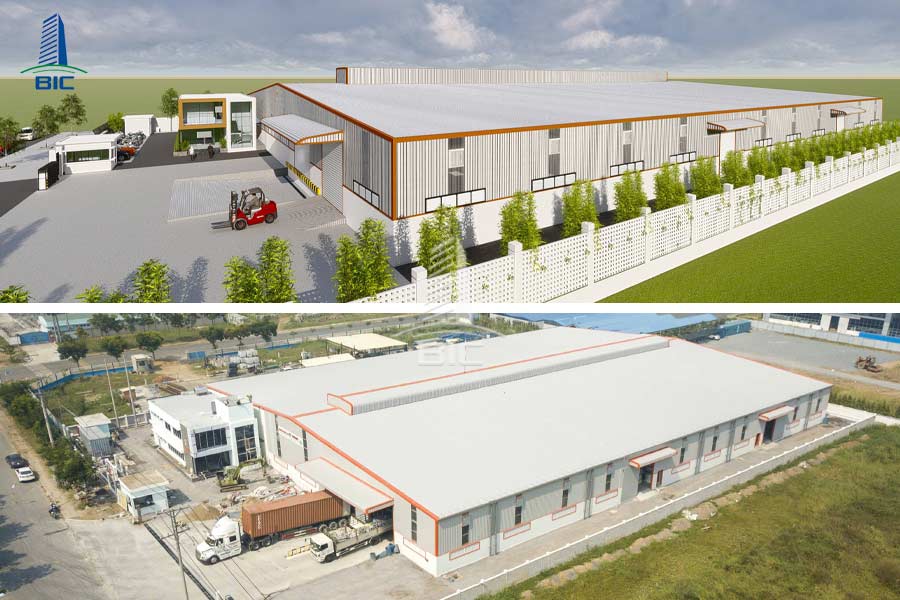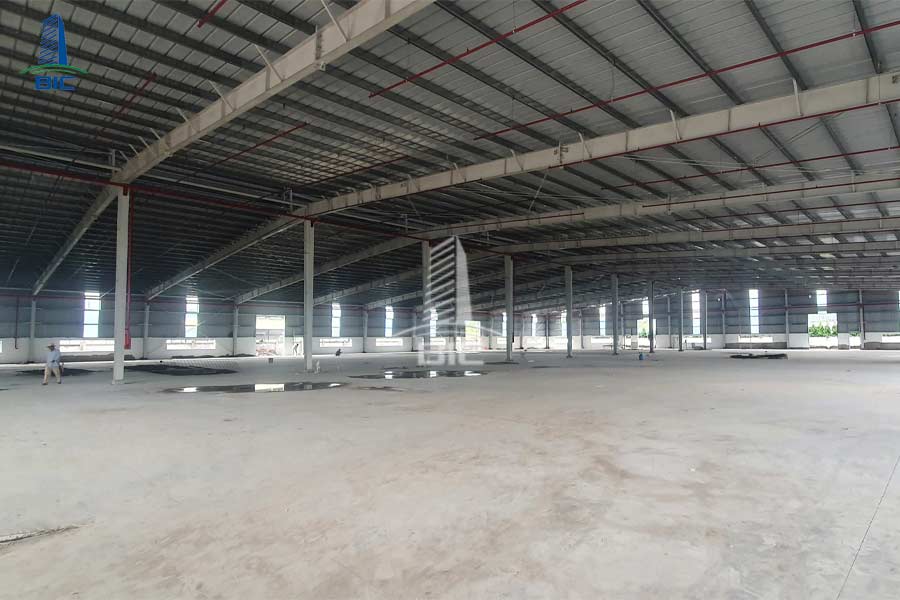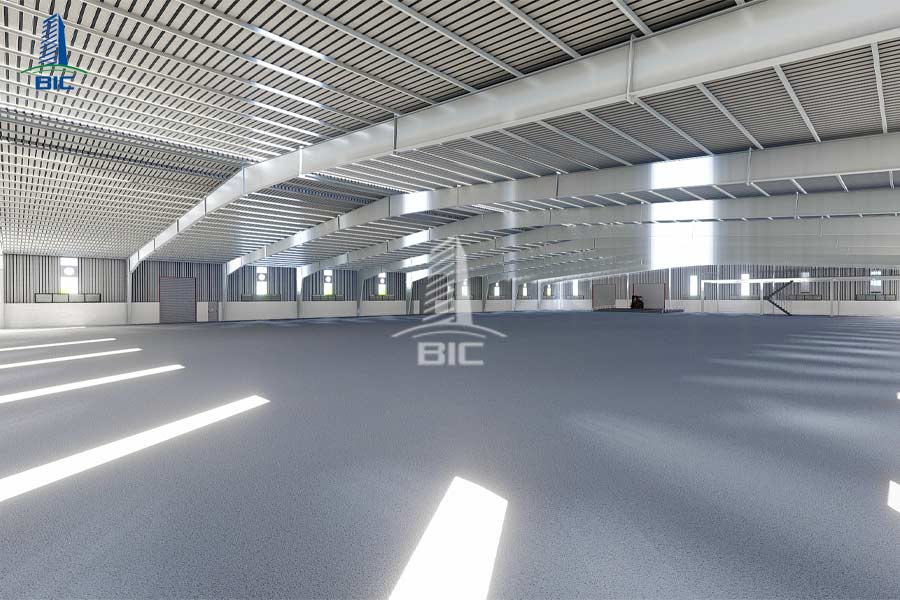
With the trend of industrialization and the need to optimize investment costs, steel structures have become the top choice in modern factory construction. Boasting outstanding advantages in construction speed, superior durability, and flexible expansion capability, steel structures not only meet stringent technical requirements but also deliver long-term economic benefits for investors.
Unlike traditional reinforced concrete methods, factory designs using steel structures allow for prefabrication at the factory, shortening on-site construction time by 30–50%, while significantly reducing labor and foundation costs. This solution is favored by manufacturing, logistics, and warehousing businesses to quickly bring facilities into operation.
If you are looking for a construction method that ensures quality while optimizing costs and time, steel structures are the perfect answer for your project.
For a long time, reinforced concrete was almost the default choice for most industrial factory projects thanks to its durability, load-bearing capacity, and stable material costs. However, in the context of modern manufacturing with increasing demands for construction speed, expansion capability, and cost efficiency design thinking is shifting.
Instead of being constrained by reinforced concrete, which is time-consuming to build and difficult to modify, businesses are turning to steel structures a solution that meets technical requirements while offering outstanding flexibility. Steel structures significantly shorten construction time, reduce foundation loads, and make it easier to expand or upgrade facilities without disrupting production.

In a fiercely competitive business environment, companies must bring factories into operation as soon as possible to seize market opportunities, fulfill orders, or expand production. Steel structures make this possible thanks to the advantages of prefabricated construction: the entire steel frame is fabricated at the factory, then transported to the site for assembly.
This process minimizes weather-related construction risks, ensures rapid progress and high precision, and reduces build times to just weeks or months instead of quarters—compared to traditional methods.
Sustainable development trends and modern technical standards demand stricter requirements for industrial buildings not only fire safety, storm and earthquake resistance, but also energy efficiency and environmental friendliness. Steel structures, with their high load capacity, exceptional durability, and light weight, are an ideal choice.
Moreover, this type of structure easily integrates “green” solutions such as rooftop solar panels, natural ventilation, and daylighting, helping reduce operating costs and carbon footprints. This not only saves money in the long term but also enhances a company’s brand image with customers and partners.
Steel structures are manufactured and prefabricated at the factory with high precision, then transported to the site for quick assembly shortening timelines by 30–50% compared to reinforced concrete. For manufacturers, faster construction means earlier operations, timely order fulfillment, and reduced risk of project delays.

The lightweight nature and large-span capability of steel structures significantly reduce foundation, formwork, and labor costs. Shorter construction periods also cut project management costs, equipment rentals, and especially interest expenses during construction.
Steel has excellent mechanical properties, withstanding heavy loads, storms, and seismic activity. When properly treated for corrosion resistance, steel structures can last for decades without compromising safety or aesthetics crucial in industrial environments.
Steel structures are modular, allowing for dismantling, expansion, or relocation without affecting the overall structure an advantage over reinforced concrete, which is fixed after construction.
Steel is nearly 100% recyclable and reusable, significantly reducing construction waste. Steel-structured factories can also integrate green technologies, reducing energy costs and environmental impact.
Ideal for industries such as textiles, electronics, food, machinery, and chemicals that require large, open workspaces.
Steel’s durability and load-bearing capacity make it perfect for storage and logistics facilities requiring large spans and flexible layouts.
Combining production and office space in one building saves land and operational costs. Steel structures make adding mezzanines or office floors quick and simple.

Engineers assess site conditions geology, wind direction, load-bearing capacity, climate, and infrastructure alongside the client’s production needs and industry specifics to create an optimal, cost-effective design.
Detailed technical drawings specify static and dynamic loads, steel frame configuration, joints, roofing, floors, walls, fire safety, evacuation, and environmental systems ensuring safety and cost efficiency.
All steel components are cut, welded, and processed at the factory using modern machinery under strict quality control, ensuring precision and uniformity.
Prefabricated steel components are delivered to the site for quick assembly. Auxiliary systems electricity, plumbing, ventilation, lighting, and fire safety are installed in parallel for fast commissioning.

Choose companies with a track record of diverse steel structure factory projects, a clear portfolio, and positive client feedback.
Success depends on engineers who understand both structural and functional requirements and can optimize designs for cost and durability, as well as skilled workers who follow safe assembly practices.
Professional contractors have transparent contracts with clear timelines, warranties, and technical standards, applying strict quality control throughout the design, fabrication, and construction stages.
Steel structures are not just a trend they are a smart investment solution. With advantages in speed, durability, flexibility, and cost-effectiveness, they are an optimal choice for all types of factories, from manufacturing to warehousing to integrated office spaces.
A well-designed steel structure factory, built with a professional process, will not only meet operational needs but also deliver sustainable value over time. Contact BIC today for tailored steel structure solutions, detailed quotes, and end-to-end project implementation from concept to handover ensuring quality, deadlines, and investment efficiency.